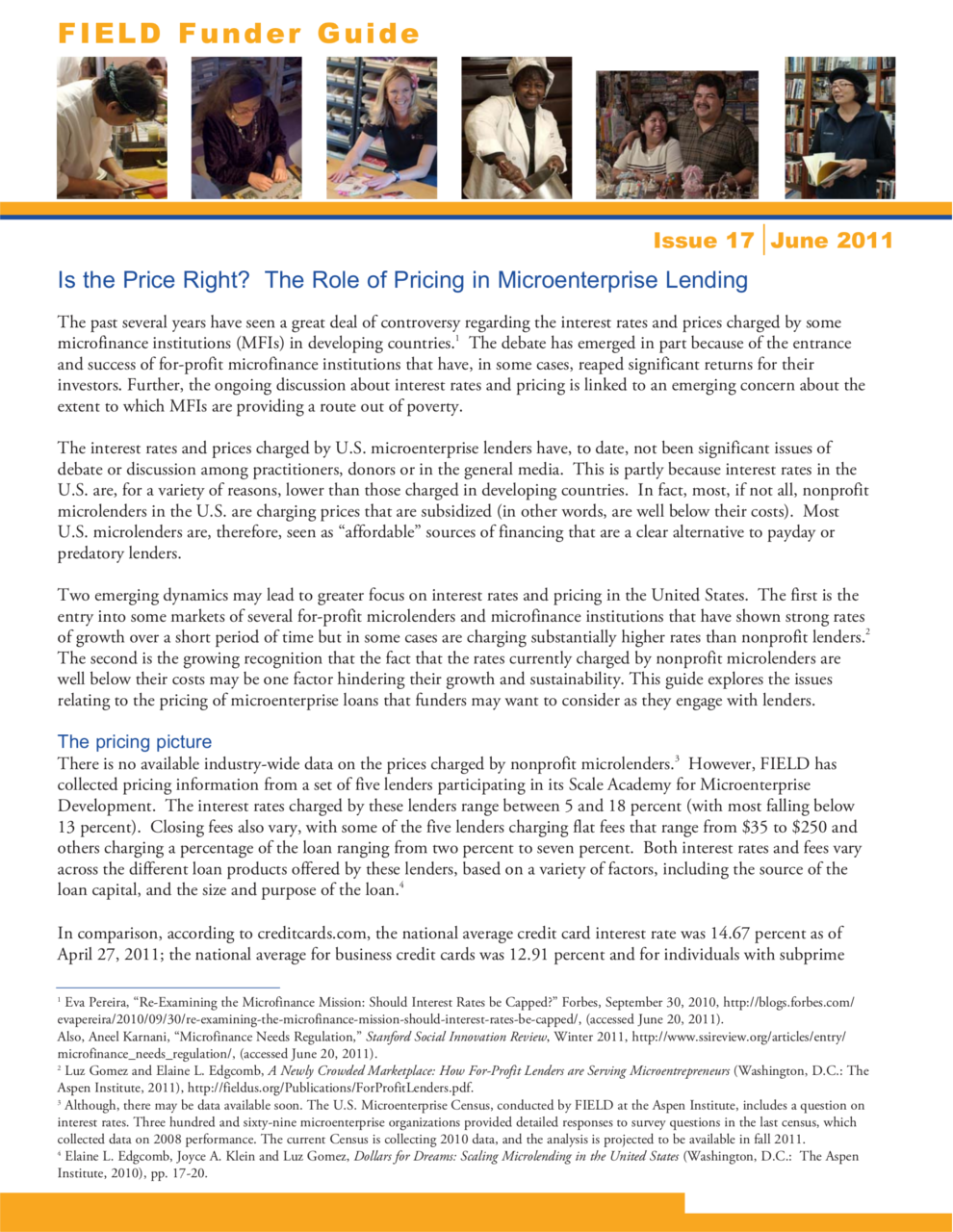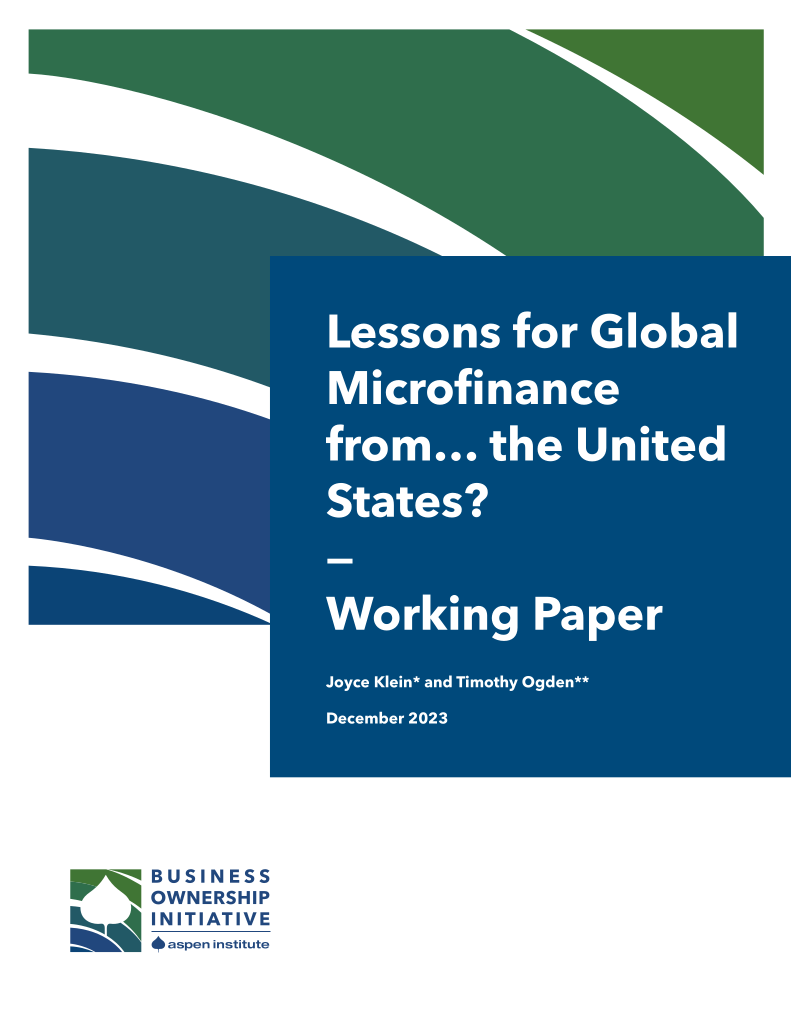The past several years have seen a great deal of controversy regarding the interest rates and prices charged by some microfinance institutions (MFIs) in developing countries. The debate has emerged in part because of the entrance and success of for-profit microfinance institutions that have, in some cases, reaped significant returns for their investors. Further, the ongoing discussion about interest rates and pricing is linked to an emerging concern about the extent to which MFIs are providing a route out of poverty.
The interest rates and prices charged by U.S. microenterprise lenders have, to date, not been significant issues of debate or discussion among practitioners, donors or in the general media. This is partly because interest rates in the U.S. are, for a variety of reasons, lower than those charged in developing countries. In fact, most, if not all, nonprofit microlenders in the U.S. are charging prices that are subsidized (in other words, are well below their costs). Most U.S. microlenders are, therefore, seen as “affordable” sources of financing that are a clear alternative to payday or predatory lenders.
Two emerging dynamics may lead to greater focus on interest rates and pricing in the United States. The first is the entry into some markets of several for-profit microlenders and microfinance institutions that have shown strong rates of growth over a short period of time but in some cases are charging substantially higher rates than nonprofit lenders. The second is the growing recognition that the fact that the rates currently charged by nonprofit microlenders are well below their costs may be one factor hindering their growth and sustainability. This guide explores the issues relating to the pricing of microenterprise loans that funders may want to consider as they engage with lenders.


